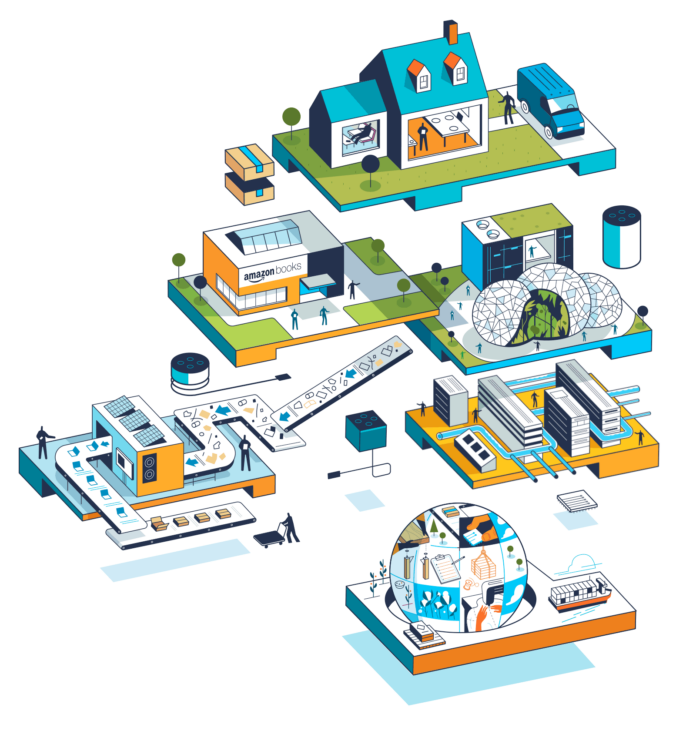The virtuous circle that turned Amazon into an $850 billion business
While Amazon's dominance has been built on a wide variety of competitive solutions, Its main commercial advantage comes from taking advantage of the effects of creating a market network in which suppliers and customers are added..
One of Amazon's fundamental principles was based on the fact that the more people in its network, both suppliers and customers, the lower the prices it could offer to final buyers.
Lower prices meant a better customer experience which in turn attracted more customers; more customers attracted more sellers; more vendors meant a better selection of goods and prices; better products and prices created a better customer experience; etc.
Over time, Amazon has expanded into new retail verticals (appliances, cosmetics, electronics, fashion, …), added features, and even created marketplaces that compete with its own marketplace, all in an effort to increase user engagement and fuel that virtuous circle of growth.
In the late 1990s, Amazon began expanding from books to other media products, including CDs, movies, and other electronics. A few years later, it launched Marketplace, what BGive third-party sellers the ability to sell products alongside other Amazon products.
While the Marketplace may have technically cannibalized Amazon sales, it served the purpose of the Amazon wheel by reinforcing the image to customers that Amazon was the best and cheapest place to buy any product.
Attracting more customers through better functionality and growth in new verticals, Amazon used the resulting growth to attract more vendors, who began to see Amazon as the best way to reach a global customer base and increase revenue.
In 2005, Amazon used its new capabilities in shipping and logistics to start its Prime program, which offers free 2-day shipping within the United States and many other countries for an annual price of $79.
Prime made delivery on Amazon faster than virtually any other shipping method associated with other e-commerce stores and created a turning point in the company's growth. As of April 2021, customers in the Prime program exceed 200 million worldwide.
"I want to build protection around our best customers," Bezos said as Amazon planned Prime. “We are not going to take our best customers for granted.”
In 2006, Amazon launched Amazon Web Services with the launch of the Elastic Compute Cloud. After upgrading its own back-end to better scale its computing power, Amazon was able to make that same power available to startups and other customers.
Today, AWS is Amazon's third largest source of revenue. With the growth of AWS, Amazon's computing power increased and its unit costs of renting that power to others decreased.
Amazon continues to use its profits to lower prices, increase supply and create a better customer experience, fueling the fundamental wheel that helped it become the world's largest online retailer.
For example, in June 2017, Amazon announced that it was acquiring Whole Foods for $13.7 billion. The company immediately lowered prices on high-volume Whole Foods items and added discounts for Prime members.
Whole Foods deliveries are also available at no additional cost through Amazon's Prime Now service, giving Prime customers the added benefit of shopping for grocery items online and for immediate delivery.
When Amazon enters a new market, it does so with its formidable scale, huge user base, and willingness to compete in razor-thin margin industries, a strategy that has allowed it to grow from a small bookseller to a veritable All-In.




